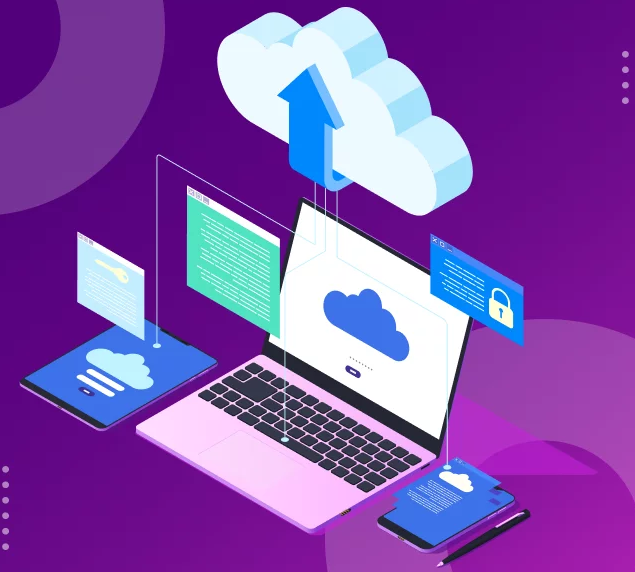Cloud computing has revolutionized the way businesses operate, offering unparalleled scalability, flexibility, and cost-efficiency. However, along with its many benefits, cloud computing also presents certain risks and challenges that organizations must address to safeguard their data, privacy, and operations. In this comprehensive guide, we’ll explore the various risks associated with cloud computing and discuss strategies for mitigating them effectively.

Data Security Risks
One of the primary concerns with cloud computing is data security. Storing sensitive information in the cloud exposes it to potential security breaches, data leaks, and unauthorized access. Additionally, reliance on third-party cloud providers means entrusting them with the protection of valuable data, raising concerns about data ownership and accountability.
Compliance and Regulatory Risks
Another significant risk of cloud computing is non-compliance with industry regulations and data protection laws. Different jurisdictions have varying regulatory requirements regarding data privacy, security, and residency. Failure to comply with these regulations can result in severe penalties, fines, and damage to an organization’s reputation.
Data Loss and Availability Risks
Despite robust backup and disaster recovery mechanisms offered by cloud providers, data loss and service outages can still occur. Network disruptions, hardware failures, and human errors can lead to data loss or unavailability, causing significant disruptions to business operations and productivity.
Vendor Lock-In
Vendor lock-in refers to the dependence on a single cloud provider for infrastructure, services, and applications. While cloud services offer flexibility and scalability, migrating data and applications between different providers can be complex and costly. Organizations risk becoming trapped in a vendor’s ecosystem, limiting their ability to switch providers or negotiate favourable terms.
Cybersecurity Threats
Cloud environments are prime targets for cyberattacks due to their large-scale infrastructure and shared resources. Common cybersecurity threats include malware infections, phishing attacks, ransomware, and insider threats. Organizations must implement robust security measures, such as encryption, multi-factor authentication, and intrusion detection systems, to protect against these threats.
Performance and Reliability Risks
Cloud computing relies on the internet and network connectivity, making it susceptible to performance and reliability issues. Factors such as latency, bandwidth limitations, and geographical distance can impact the responsiveness and availability of cloud services. Organizations must assess their performance requirements and choose cloud providers that offer reliable and low-latency connectivity.
Lack of Control and Transparency
When migrating to the cloud, organizations relinquish a degree of control over their infrastructure and data. This lack of control can lead to concerns about data sovereignty, governance, and visibility. Additionally, cloud providers may not always offer full transparency into their operations, making it challenging for organizations to assess the security and compliance posture of their cloud environments.
Cost Overruns and Hidden Expenses
While cloud computing offers cost benefits through pay-as-you-go pricing models, organizations must be vigilant to avoid cost overruns and hidden expenses. Factors such as data egress fees, bandwidth charges, and premium support services can significantly impact overall costs. Proper monitoring, budgeting, and optimization strategies are essential to control cloud spending effectively.
Legal and Jurisdictional Risks
Operating in a cloud environment may raise legal and jurisdictional concerns, especially when dealing with sensitive data or conducting business in multiple regions. Different countries have distinct laws regarding data protection, privacy, and intellectual property rights, which can pose challenges for organizations operating in the cloud. It’s essential to carefully consider the legal implications and ensure compliance with applicable laws and regulations.
Dependency on Internet Connectivity
Cloud computing relies heavily on internet connectivity for accessing and managing resources. Any disruption in internet connectivity can hinder access to critical applications and data stored in the cloud. Organizations operating in regions with unreliable or limited internet infrastructure may face challenges in maintaining uninterrupted access to cloud services. Implementing backup internet connections and redundancy measures can help mitigate this risk.
Insider Threats and Privilege Abuse
Insider threats, including malicious actions by employees, contractors, or business partners, pose a significant risk to cloud security. Privileged users with access to sensitive data and administrative privileges can abuse their authority or inadvertently compromise security. Implementing robust access controls, monitoring user activities, and conducting regular audits can help mitigate the risk of insider threats.
Data Sovereignty and Privacy Concerns
Data sovereignty refers to the legal jurisdiction in which data is stored and processed. Organizations operating in multiple regions must navigate data sovereignty requirements and ensure compliance with local data protection laws. Additionally, concerns about data privacy and surveillance may arise when storing sensitive information in the cloud, particularly in jurisdictions with lax privacy regulations. Understanding the implications of data sovereignty and implementing appropriate data protection measures is crucial for addressing these concerns.
Conclusion
While cloud computing offers numerous benefits, it also presents various risks and challenges that organizations must address to ensure the security, compliance, and resilience of their digital assets. By understanding these risks and implementing appropriate risk mitigation strategies, organizations can harness the power of cloud computing while safeguarding their data, privacy, and operations.

